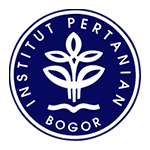With higher yields than the industry average, Superfish wants to export its system while also setting up a commercial-scale strawberry farm locally.
Having set up greenhouses in 2018 to plant Brunei’s first Japanese muskmelons, Superfish Growers are now unveiling their latest pioneering pursuit: the sultanate’s first indoor strawberry vertical farm.
Located on the same site as their melon farm at the Agrotechnology Park in Kg Tungku, Superfish’s strawberry farm is a compact setup – with a floor space much smaller than a residential house – featuring 2,000 plants spread across four vertical racks, each five stories tall.
Co-founder and CTO of Superfish Lee Wei Sheng said they’ve been experimenting with their pilot setup since 2019, having outlined two initial commercial goals: to export their own patented system of farming strawberries, and to set up a commercial farm of 10,000 to 15,000 plants by next year, capable of producing 40 tonnes to 60 tonnes of strawberries every eight months.
Lee explained that the COVID-19 pandemic accelerated their focus on developing their vertical farm system, as rising logistics costs and food shortages globally increased their viability as an option to reduce dependency on imports and bolster local production.
“The idea we want to explore here is can we implement farming systems that will allow us to grow more valuable crops locally, closer to consumers?” he said.
“This way we will not only save on logistics (shipping and transport costs) and reduce our environmental carbon footprint but also deliver a fresher product to the customer. With the right setup and technology we can control and optimise conditions so we can grow year-round, compared to the traditional season-based planting.”

Having set up greenhouses in 2018 to plant Brunei’s first Japanese muskmelons, Superfish Growers are now unveiling their latest pioneering pursuit: the sultanate’s first indoor strawberry vertical farm.
Located on the same site as their melon farm at the Agrotechnology Park in Kg Tungku, Superfish’s strawberry farm is a compact setup – with a floor space much smaller than a residential house – featuring 2,000 plants spread across four vertical racks, each five stories tall.
Co-founder and CTO of Superfish Lee Wei Sheng said they’ve been experimenting with their pilot setup since 2019, having outlined two initial commercial goals: to export their own patented system of farming strawberries, and to set up a commercial farm of 10,000 to 15,000 plants by next year, capable of producing 40 tonnes to 60 tonnes of strawberries every eight months.
Lee explained that the COVID-19 pandemic accelerated their focus on developing their vertical farm system, as rising logistics costs and food shortages globally increased their viability as an option to reduce dependency on imports and bolster local production.
“The idea we want to explore here is can we implement farming systems that will allow us to grow more valuable crops locally, closer to consumers?” he said.
“This way we will not only save on logistics (shipping and transport costs) and reduce our environmental carbon footprint but also deliver a fresher product to the customer. With the right setup and technology we can control and optimise conditions so we can grow year-round, compared to the traditional season-based planting.”

Though vertical farms to are more widely known for producing leafy greens, there is a small but growing niche of businesses using the same setup for planting strawberries, due to their higher value and perishability.
Players in this segment are competing on both the technological front and economic viability of their systems, as the higher yield returns have to be balanced against the higher investment costs associated with deploying specialized equipment, precise environmental control, and expertise in understanding the specific requirements of the chosen strawberry variety.
“Setting up (vertical systems) for fruit-bearing plants is more complex; for example, the lights spectrum (using LED) must include more colours, certain amount of red, blue and little bit of green – at different stages of their life cycle, they call for different levels,” said Lee.
“So getting the right light recipe is one of the aspects we have spent a lot of effort researching. We also have a software that helps us monitor all our inputs, for us to make smart decisions; and sensors to monitor and alter the temperature, average CO2 and humidity levels so it stays within the indicated levels.”
Since setting up in 2018, Superfish have expanded their commercial product range to include several types of melons and chilies, while also opening up contract farming opportunities for Bruneians to set up their own small farms at their site using their system.









